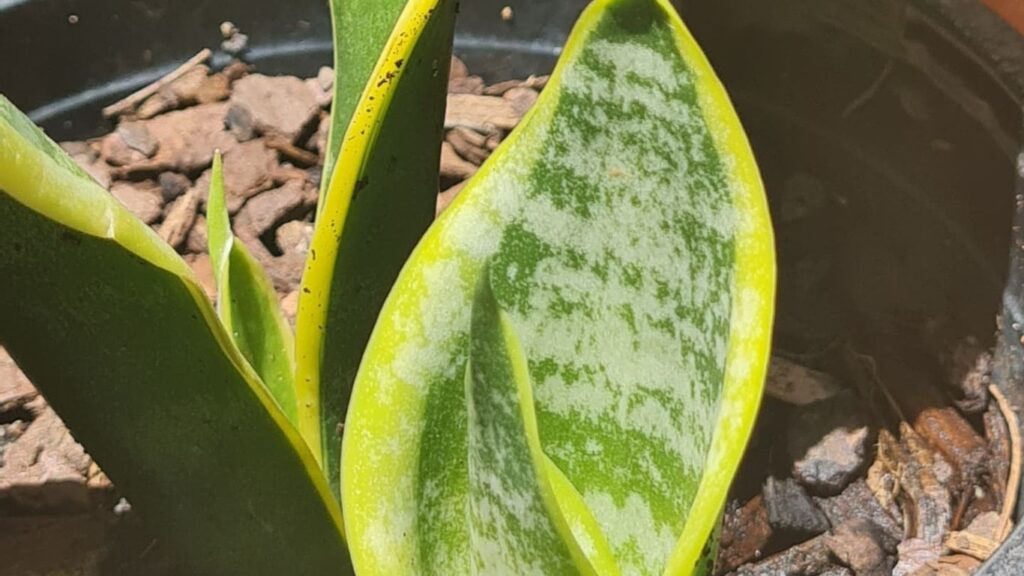If you want to know about snake plants grow and care then this article is for you.
The plants are also known by their more exotic botanical name, ‘sanseveria’
But you may also refer to them as mother-in-law’s tongue, viper’s bowstring hemp or tiger’s tail orchid.
These stunning succulents originate from West and South Africa, but are also found wild in more tropical climates such as Florida and Hawaii.
The snake plant often has broad leaves that become straight and elongate to a spike at the top.
They may belong to the same family, but each type of snake plant can look very different.
Zey’s distinct tiger stripes and height give him extra drama, while Mikey is a little more compact, making him ideal for a shelf or a desk.
Apollo may be the rarest of our snake plant family, but he’s just as easy to care for as Susie, who is a good all-rounder and grows in many sizes.
Snake plant is a good choice for beginners as it tolerates a range of growing conditions.
These low maintenance container plants add decorative interest when planted indoors.
Is it Easy to Snake Plants Grow and Care ?

Snake plants are notorious for neglect. they respond best to the lightest of waterings and are then left alone.
That’s why we call them (almost) impotent, making them a great beginner plant or ideal if you enjoy some green company around your busy schedule.
If you have a baby, toddler, or pet, you should be aware that snake plants can be mildly poisonous if eaten.
While that doesn’t mean they’re cold-blooded killers, it’s wise to keep them out of the reach of small humans and furry family members.
How Often Should I Water My Snake Plants?

Snake plants don’t need a lot of water. Whenever it feels too dry or crumbly about every two weeks and less often in the winter just top them with a tipple to moisten the soil.
Make sure you allow your snake plant’s soil to completely dry out between waterings, as this helps prevent root rot.
Naturally, a larger snake plant will need more water, and water more frequently.
How Much Light Does My Snake Plant Need?

Snake plants are easy to move around and will thrive in almost any light conditions.
Although they draw the line at being locked in a windowless room for long periods.
The lighter and brighter the spot you choose for your snake plants, the happier they will be.
But really, it’s not too hard to sweat. Your snake plant will adapt to the light being shined on them.
What is The Optimum Temperature For My Snake Plants?

Snake plants can survive in most temperatures. Too much direct sun can cause the plant to burn and damage its leaves.
During the winter, be sure to protect your plants from drafty windows.
Avoid keeping your snake plants in the bathroom, as they prefer dry conditions.
They will be a lot happier in your bedroom or living room. Soil as a houseplant, snake plants like a loose, well-drained potting soil mix.
Snake Plants Grow and Care For How Many Water Needs?

During the winter, check the plant’s soil mixture every two weeks or so – the plant may need to be watered once a month.
Remember that the fastest way to kill a snake plant is to overwater it. Yellowing of the leaves is an early sign of overwatering.
Resurrect My Snake Plants Grow and Care?

You can probably keep your snake plant in its original nursery pot for a long time, unless its roots are bursting out from the bottom of the pot.
Snake plants are relatively slow growers so it won’t need to be repotted very often.
If you feel it is outgrowing its original pot, move it to a larger nursery pot in spring, using a specialist houseplant or cactus compost.
You can find our repotting guide here. Some snake plants grow quite tall, so make sure your decorative pot is heavy enough to stop it from tipping over.
Does My Snake Plant Need Some Extra Love?

Your snake plant really is a forgiving soul and doesn’t need much in the way of tender loving care.
Wiping their leaves once in a while with a clean, damp cloth will help keep them free of dust and debris.
This will help your snake plants breathe freely, absorb light and make them look shiny.
Snake Plants Grow and Care For Manure

Do not fertilize during winter. During the spring and summer, your snake plant will thank you for feeding it with a good quality liquid fertilizer once a month.
Treat it as a special treat rather than a necessity; they will fix this without additional steps.
Varieties of Snake Plant
Dracaena trifasciata ‘Hahnii’: Also known as the bird’s nest snake plant, ‘Hahnii’ grows to just six inches tall.

Dracaena angolensi: The rounded, stiff leaves of this cylindrical snake plant are several feet long. Arch outwards from central crown.

Dracaena trifasciata ‘Laurentii’: This variegated variety has creamy yellow leaf margins.

Dracaena trifasciata ‘Bantel’s Sensation’: This three-foot-tall cultivar has narrow leaves with white vertical stripes.

Dracaena pearsoni: Sometime.

Dracaena trifasciata ‘Twisted Sister’: The twisted leaves bear horizontal stripes with variegated edges in yellow. It grows to 15 inches tall.
Conclusion
From the above discussion it is evident that snake plant growing and care is not very difficult.
We can easily take care of this plant in our living house and prevent our air pollution, which will play a very helpful role for our health.
But it should be noted that this plant should not be eaten by pets and children, it is a poisonous plant. Poisoning may occur if consumed in excess.
Reference:
https://www.bhg.com/gardening/plant-dictionary/houseplant/snake-plant
